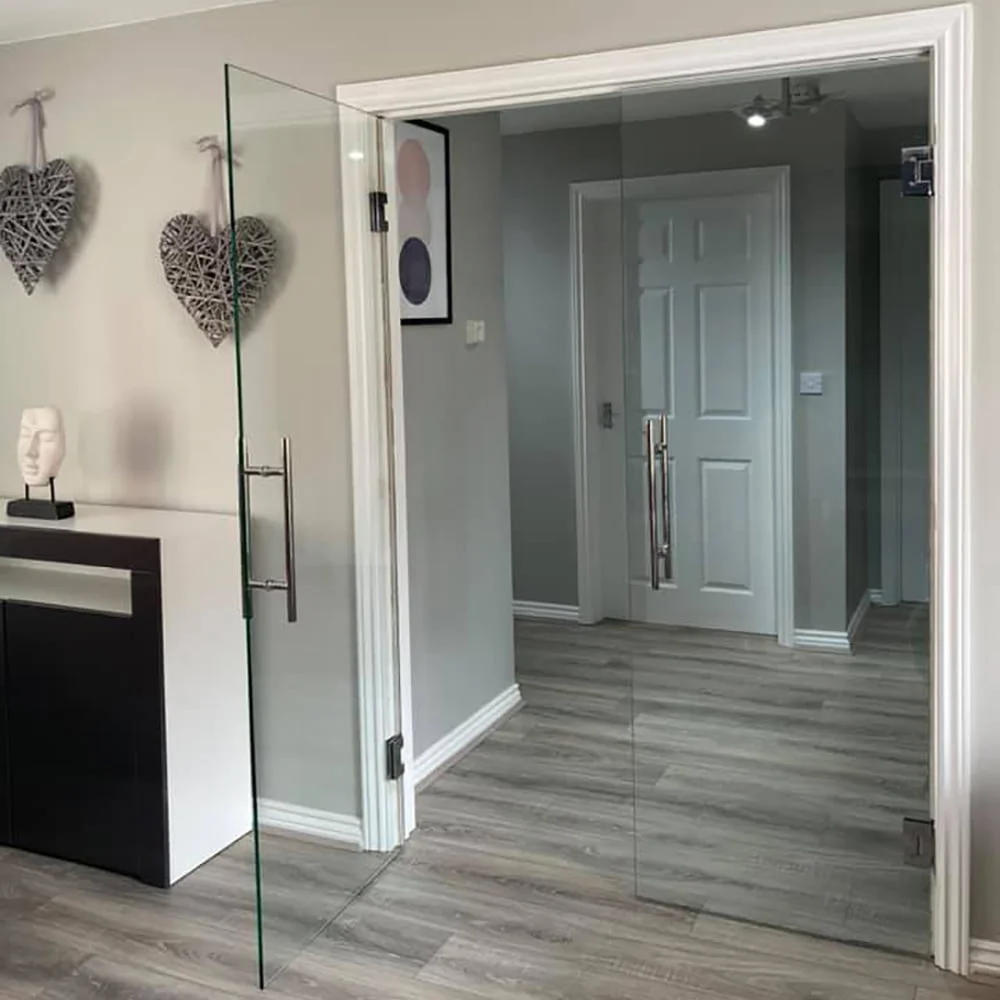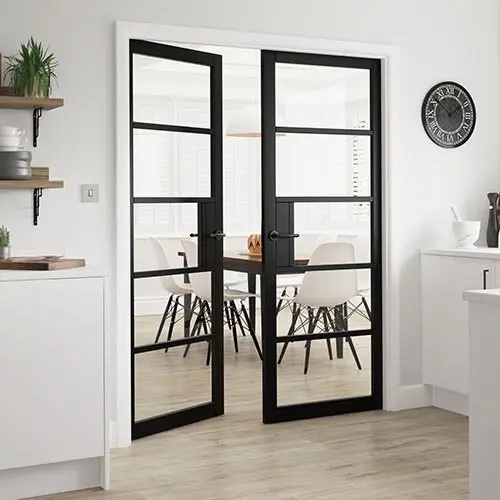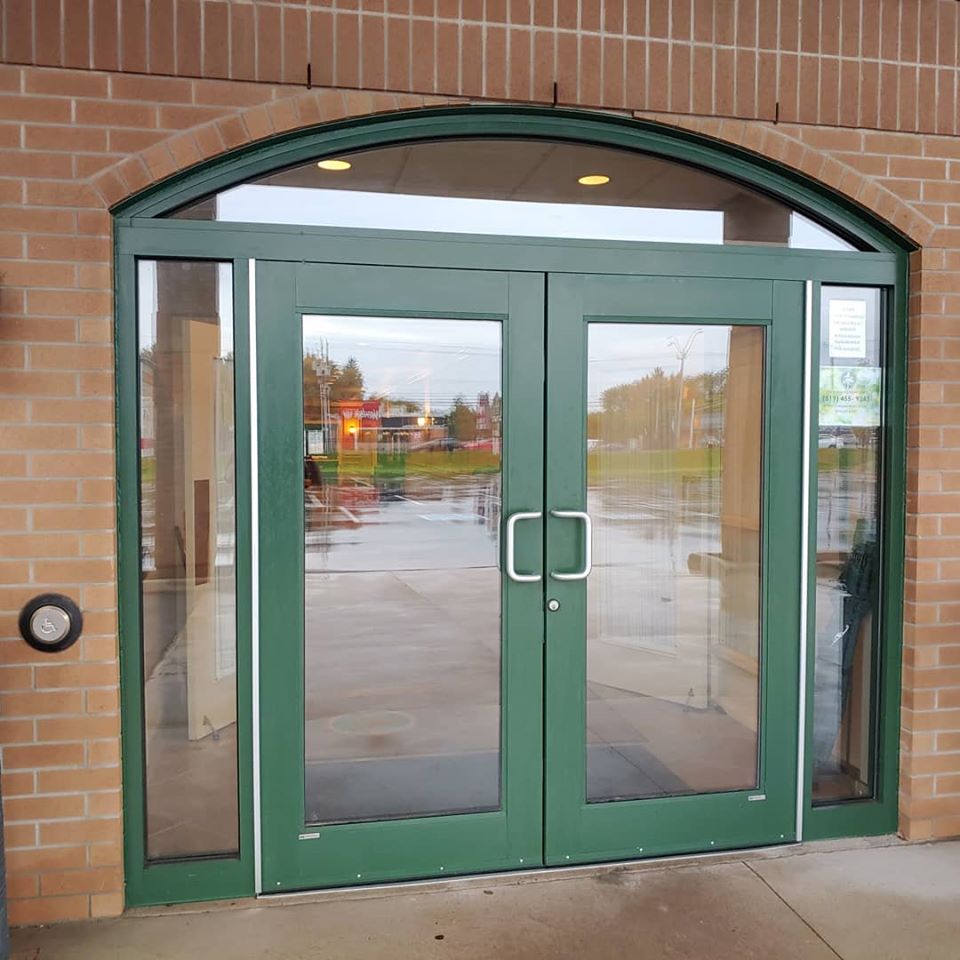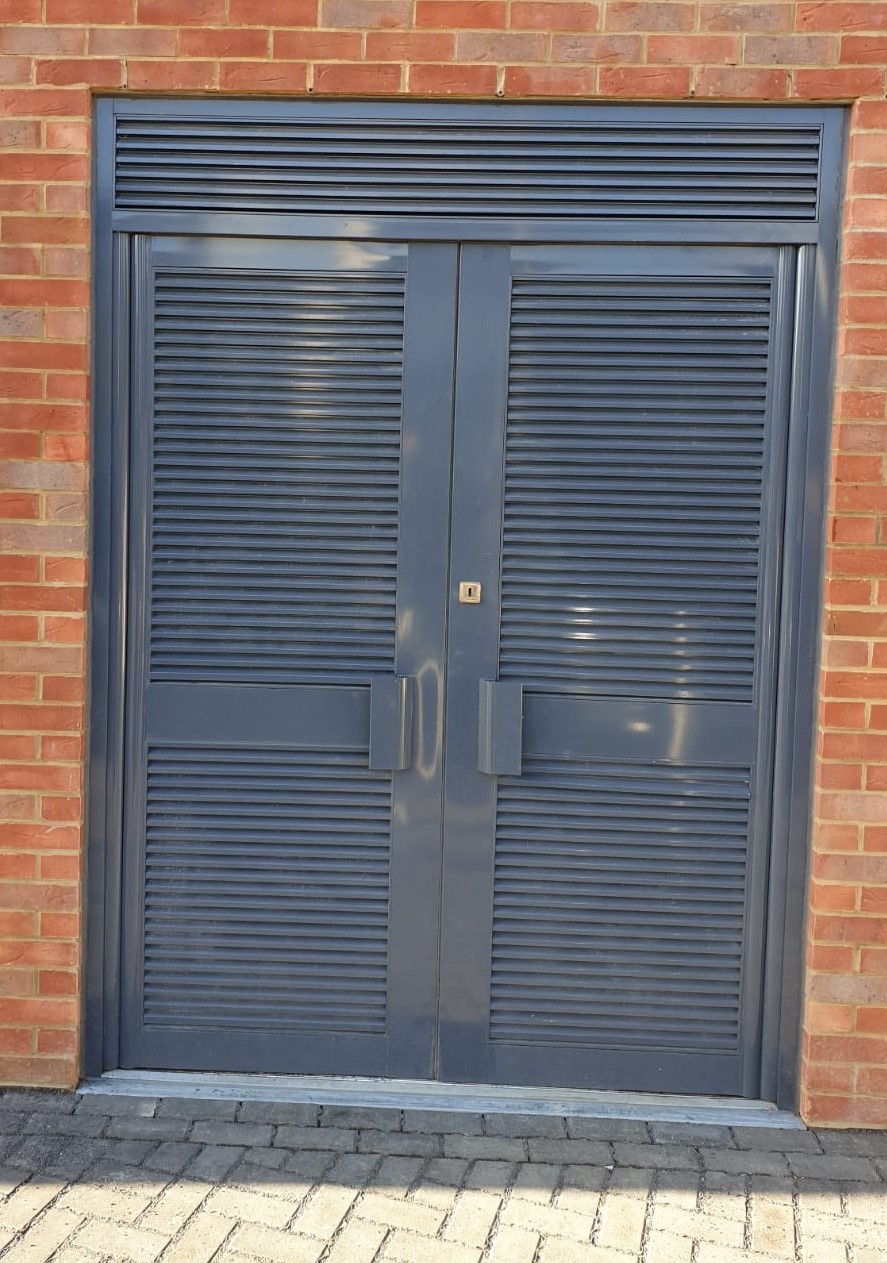Where automation is not required, a manual door is a traditional solution which is tried and tested and will give long, reliable, virtually maintenance free service.
Shopfronts Shutters Ltd fabricates and installs a range of quality double or single glazed aluminium and toughened glass frameless manual doors.
Our manual doors come in a range of options including swing, sliding and folding. All doors are manufactured to each customer’s required sizes and specification.


Swinging Doors: These are doors that pivot on hinges and swing either inward or outward to open and close. Swinging doors can be single-leaf or double-leaf (French doors). They are commonly used for entrances, interior rooms, and exterior spaces like patios.


Reliability: With fewer moving parts and no reliance on electrical systems, manual doors are often perceived as more reliable and less prone to malfunctions or breakdowns.
Manual Override: In some cases, manual doors can serve as a backup option for automatic doors, providing a manual override in the event of a power failure or malfunction.